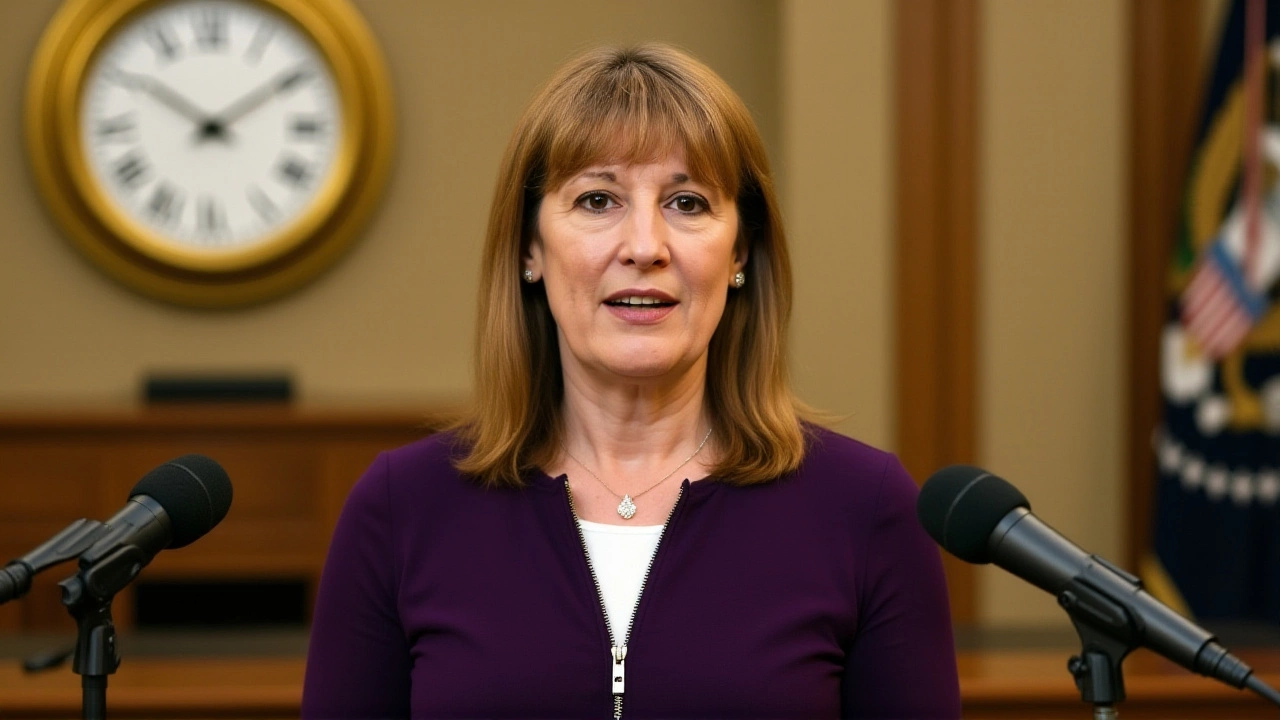UK State Pension to Jump £575 in 2026 as Triple‑Lock Triggers 4.8% Rise
 Oct, 24 2025
Oct, 24 2025
When Office for National Statistics released its latest figures on 24 October 2025, it confirmed that the next state pension rise will be £575 a year – a 4.8 % uplift that takes effect from April 2026. Jeremy Hunt, Chancellor of the Exchequer of HM Treasury, is expected to give the final sign‑off at the Autumn BudgetLondon on 26 November 2025. Meanwhile, Rishi Sunak, Prime Minister of the United Kingdom has repeatedly stressed that the triple‑lock mechanism will remain untouched.
Why the triple‑lock matters
The triple‑lock is a three‑way safety net introduced in 2010 to protect pensioners from eroding purchasing power. Each April, the increase is set to the highest of three figures: September’s Consumer Price Index (CPI) inflation, average earnings growth between May and July, or a floor of 2.5 %. In the latest cycle, September’s CPI sat at 3.8 % – matching August’s reading – while average earnings grew by 4.8 %, meaning the earnings figure will drive the boost.
Because the earnings route was the highest, the £575 annual uplift translates into a 4.8 % jump, the largest percentage increase since the 2022 rise of 5 % that followed a post‑pandemic wage surge. The mechanism is designed to keep retirees roughly in line with the broader economy, but critics argue it can strain public finances when wage growth outpaces inflation.
Breakdown of the numbers
Here’s the quick math:
- Full new State Pension weekly amount: from £230.25 to £241.30.
- Full new State Pension annual amount: from £11,973.00 to £12,547.60 – that’s the £575 bump.
- Basic State Pension weekly amount: from £176.45 to £184.92.
- Basic State Pension annual amount: from £9,175.40 to £9,615.84.
For a typical retiree drawing the full pension, the extra £575 could cover roughly a month’s worth of council tax in many England regions, or fund a modest summer holiday. The increase also nudges the average pensioner’s disposable income closer to the median household earnings figure, which stood at £31,500 in 2024.
Reactions from pensioners and experts
“It feels like a breath of fresh air after a string of tight‑budget years,” said John Patel, a 68‑year‑old pensioner from Manchester. “The extra cash will let me finally replace my old kettle.”
Financial advisers, however, urge caution. Sophie Green, senior partner at Moneywise Advisers, notes that “while the triple‑lock protects the headline figure, pensioners should still monitor the tax‑free Personal Allowance, which will be frozen at £12,570 for the next few years, potentially eroding net gains.”
Trade unions have welcomed the increase, framing it as a “promise kept” after the Labour‑led coalition promised to protect pensions in the 2019 election manifestos. The government, on the other hand, flags the rise as part of a broader fiscal package that also includes a modest rise in National Insurance thresholds.

Broader fiscal implications
According to the Treasury’s preliminary estimates, the £575 uplift will cost the exchequer about £13 billion a year once all recipients are accounted for. That represents roughly 0.3 % of total public spending. The expense is largely offset by the higher earnings‑linked component, which, paradoxically, also signals a healthier labour market.
Economists from the London School of Economics argue that “maintaining the triple‑lock in a high‑growth environment may force the government to seek savings elsewhere, potentially compressing public sector wages or delaying infrastructure projects.” The Budget, slated for 26 November, will likely feature a detailed breakdown of how the pension uplift fits into the wider fiscal roadmap, including the pending increase of the state pension age from 66 to 67 between 2026 and 2028.
What comes next
Beyond the April 2026 rise, pensioners should keep an eye on two moving target policies. First, the state pension age shift will continue, meaning anyone born after 1970 will see the qualifying age climb to 68 by 2040. Second, the government has hinted at a review of the triple‑lock itself, though no concrete timetable has been announced.
For individuals, the advice is three‑fold: verify your National Insurance record via the gov.uk portal, consider the optimal timing for claiming (delaying can boost weekly payments by up to 1 % per month after age 66), and explore supplementary private savings options such as ISAs or workplace pensions to cushion any future policy tweaks.

Historical background of the state pension
The modern state pension traces its roots to the National Insurance Act of 1946, which introduced a universal benefit for workers over 65. Over the decades, reforms have changed both eligibility and the benefit formula, most notably the 1995 introduction of the “new State Pension” that replaced the old “basic” and “additional” tiers. The triple‑lock itself was a response to the 2010 financial crisis, when the coalition government sought to shield retirees from the worst of the recession’s deflationary pressures.
Since then, the lock has survived multiple political shifts, including the 2019 pledge by the Conservative Party to retain it “in perpetuity.” Yet the lock has not been without controversy – in 2022, a temporary suspension was considered to curb public spending, but the move was abandoned after public backlash.
Today, as the UK grapples with post‑Brexit trade adjustments and a cost‑of‑living squeeze, the state pension remains one of the few guarantees many Britons rely on for financial stability in retirement.
Frequently Asked Questions
How will the £575 increase affect a pensioner receiving the full new State Pension?
The extra £575 translates to an additional £11 per week, raising the weekly payment from £230.25 to £241.30. For many, that covers utilities, a modest grocery boost, or a small leisure activity each month.
Why is the earnings growth figure used instead of inflation for this increase?
The triple‑lock picks the highest of CPI, earnings growth, or 2.5 %. In September 2025, earnings rose 4.8 %, outpacing CPI's 3.8 %, so the higher earnings figure set the increase.
What impact could the pension increase have on the UK budget?
Treasury estimates an extra £13 billion in annual outlay, roughly 0.3 % of total public spending. The cost will be absorbed through a combination of higher earnings tax receipts and modest adjustments elsewhere.
Will the increase affect pensioners' tax liabilities?
The state pension remains largely tax‑free up to the personal allowance (£12,570). However, as allowances stay frozen, higher pension income could push some retirees into taxable territory, especially if they have other earnings.
How should pensioners plan for the upcoming rise in pension age?
Advice experts give is to check National Insurance records now, consider delaying the claim to boost weekly payments, and explore private savings options to offset any future age‑related reductions.